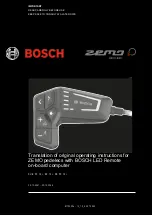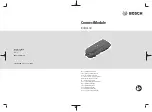
16
Setup-Fox DHX Air
setup
SHOCk
Setup- FOX RC4
saG
Once you have set your baseline air pressure you need to
measure the sag. To measure the sag slide the travel indicator
(O-Ring) up against the shock body. With a friend supporting the bike, sit
on the saddle (do not bounce) and allow your body weight to compress
the shock. Once you have compressed the shock, get off the bike and
measure the distance between the shock body and the new position of the
travel indicator (O-Ring). This is your sag. Refer to the guide below for the
percentage of sag equivalents for the measurement recorded.
3
rebOund
The rebound adjustment has a 22 click range. As a general
rule, adjustments that are too fast (counter-clockwise) will produce a
springy ride with excessive kick-up of the rear end. Adjustments that are
too slow (clockwise) will cause packing of the rear wheel and give the bike
a sluggish feel.
slower rebound -
turn the knob clockwise
faster rebound -
turn the knob counter-clockwise
bOttOm-Out resistance
The bottom-out adjuster has three
full turns of adjustment. This adjustment controls the bottom out
resistance of the shock, or the compression on the final part of the shock’s
stroke. If you feel like you are bottoming-out the shock on big hits, you can
minimize this sensation by increasing the bottom-out resistance.
more resistance -
clockwise rotation
less resistance -
counter-clockwise rotation
The adjuster can be turned by hand or with a 4mm allen key. The allen key
should be placed into one of the holes on the perimeter of the adjuster.
prO-pedal
The ProPedal adjustment switch allows the rider to
adjust the amount of ProPedal damping using a 2-position switch,
which varies from FIRM to SOFT. ProPedal damping affects the initial
part of the compression stroke and is designed to control pedal-induced
suspension bob.
the switch has two (2) positions:
More ProPedal damping, rotate the ProPedal switch clockwise.
Lighter ProPedal damping, rotate the ProPedal switch counterclockwise.
5
4
6
setup Overview
The DHX RC4 employs both speed sensitive rebound damping and position sensitive
compression damping. There are four external adjustments that affect the compression and one external
adjustment for the rebound. The four compression adjustments are the Bottom Out Resistance, Boost Valve,
High Speed Compression, and Low Speed Compression. Bottom out resistance affects the final part of the
compression stroke, Boost Valve provides position – sensitive end stroke damping; this allows for a seamless
transition from small bumps to big drop bottom-outs. The Low Speed Compression adjuster affects the
compression damping during slow speed suspension movements, such as pedaling, g-outs or smooth jump
landings and the High Speed Compression adjuster affects the compression damping during medium-to-fast
suspension movements, such as steep jump faces, flat jump landings, and square edge bumps.
bOttOm Out resistance
The bottom-out adjuster has 4 turns of
adjustment. This adjustment controls the bottoming resistance of the
shock, meaning it controls the compression on the final part of the shocks
stroke. The adjuster can be turned with a 3mm allen key inserted into one
of the holes around the perimeter of the dial.
more resistance –
clockwise rotation
less resistance –
counter-clockwise rotation
1
bOOst valve
The DHX RC4 has an air pressure range of 125-200
psi, and it must be pressurized. The boost valve allows for seamless
transition from small bumps to big drop bottom-outs.
for more bottom-out control
, add 10-15 pounds of air pressure, to a
maximum of 200psi.
for less bottom out control,
decrease the shocks air pressure by 10-15
pounds with the pump’s bleed valve, to a minimum of 125 psi
Warning:
Never ride your bike with more than 200 PSI, or less than 125
PSI in the reservoir air chamber. Doing so can damage your shock and require
repairs that are NOT covered under warranty
2



































